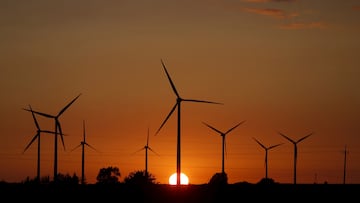Daylight saving time 2024: how much can you save on your electricity bill with this change?
Twice a year we change the hour on our clocks with the idea it will save energy. But do we really? And if so, how much do we save on our electricity bill?

The ritual of changing our clocks forward one hour takes place every second Sunday in March. And roughly nine months later most Americans will have to turn back the hour yet again, unless a legislation clears both the House and the Senate to keep Daylight Savings Time permanent.
The concept was devised a couple hundred years ago but wasn’t put into practice until what many consider a nuisance became a necessity. The reason, to save energy by making more use of the sunlight during the longer summer days.
So, are the savings on electricity bills really worth the hassle? That depends on where you live and what you do with your extra daylight.
How much can you save on your electricity bill with the Daylight Saving Time change?
Although the US first implemented Daylight Saving Time during World War I, as a way to save energy resources for the war effort, it wasn’t until 1966 that it was imposed across most of the nation under the Uniform Time Act. However, the first study into potential savings wasn’t performed until 1975. Compared with Standard Time, that study carried out by the US Department of Transportation discovered that the US saved about one percent of energy usage.
However, after that time little information was collected on energy savings despite shifting trends in energy usage by households. That changed in 2006 when Indiana implemented Daylight Saving Time statewide, previously only certain parts of the state followed the time change. Analysis performed on energy usage in the areas of the state that hadn’t previous done the twice-yearly shift contradicted the earlier US Transportation Department data showing a one percent rise in residential electricity use.
The researchers ventured that although less lighting is needed, the longer summer evenings caused a spike in AC usage in households throughout the state. So it could be wise to take advantage of the extra sunlight with outdoor activities to save on electricity bills instead of staying cool inside.
Another opportunity came in 2007 when Daylight Savings was extended by three weeks. Researchers at the California Energy Commission found the extra sunlight made little to no difference with the observed drop of 0.2 percent in energy usage well within the statistical margin of error of 1.5 percent.
How to save on your electricity bill
Energy consumption in American households has dropped by around 35 percent in 2015 compared to 1980 levels according to the US Energy Information Administration. That’s in spite of the average home using more air conditioning, appliances, and consumer electronics than ever before.
This has been a result of improved efficiencies in household appliances and better building materials and insulation. Additionally, Americans have migrated to parts of the country with lower demand for heating in the winter months.
Besides making investments in your home to weatherize it against the heat or cold, switching out old appliances can pay for itself over time through lower energy bills. Additionally, making your home self-sustainable with solar power or wind turbines. Likewise using geo-thermal heating or cooling, although they have high upfront costs, can drastically cut the amount of energy needed from the grid.






